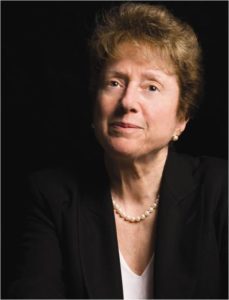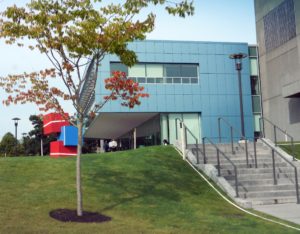We have much more to do and your continued support is needed now more than ever.
How Community Colleges Can Expand Clean Energy Job Opportunities
Interview with Jane Weissman, President/CEO, Interstate Renewable Energy Council (IREC)

Jane helped to create a plan towards the goal of graduating more than 20 million “global sustainability citizens” by 2025 called “Greenprint: A Plan to Prepare Community College Students for Careers in the Clean Economy”.
Jane (JW) recently spoke with David Corsar (DC), of NWF, about the Greenprint, IREC, and the role of community colleges in supporting the clean energy economy.
DC: What have you observed about the number, growth and types of green and clean jobs available across the nation in your industry in the last few years?
JW: Solar energy has shown impressive growth and exciting promise amplified by some recent national and international accelerators such as the COP21 and the EPA’s Clean Power Plan. Just last month, Congress extended the solar investment tax credit. This gives investors and companies long-range planning horizons and incentives. And then, back in September, the United Nations Development Program came out with their sustainable development goals, with the 7th one being for affordable and clean energies. All of these market and policy drivers position clean energy as mitigation and prevention measures.
We’re seeing growth in all sectors of the solar industry – residential and commercial as well as large and complex utility-scale installations. With this upsurge are jobs. The Solar Foundation just released a report a couple weeks ago where they counted almost 209,000 solar jobs in 2015. So, the punchline to your question is that there’s sizeable growth, and we have reasonable incentives and policy accelerators in place along with supportive and articulated public opinion. But, we’re seeing political pushback which is not unexpected.

JW: Let me start with the last part of your question. Their role will continue to be very important. Their educational delivery system and their ability to look at labor markets and respond to certain sectors in their service areas is incredibly impressive. Community colleges are a critical cog in closing skill gaps, workforce readiness and local economic growth.
We do need to be aware and learn from some of the recent hiccups and missteps that surfaced when grants supported training that didn’t link with jobs. It’s a catch-22. You want to make sure you have training ready when the jobs are there, but you don’t want to have an overabundance of training if the jobs aren’t. The key is industry partnerships. Without connecting the learning and working worlds, you will continue to have missteps.

DC: If a community college student is interested in going into clean energy or other related clean economy careers, what would you advise them to do and how can your organization help?
JW: Good question. One viewpoint we promote is for training and professional development opportunities to not necessarily be standalone ones, but be integrated into existing programs. So, for example, instead of somebody saying, “I want a solar installer training program” maybe a more sustainable approach would be “I want to become an electrician with solar installations as a specialty service and I want courses within that electrical program to train me on solar energy”.
Our feeling is to ask people interested in the field, what do they want to do and then talk about how to get the training to make that profession “green”. If you’re an architect, how do you learn the skills to integrate these technologies into the design of the building? This is how we bring these technologies into the mainstream disciplines and not necessarily as separate programs.






















